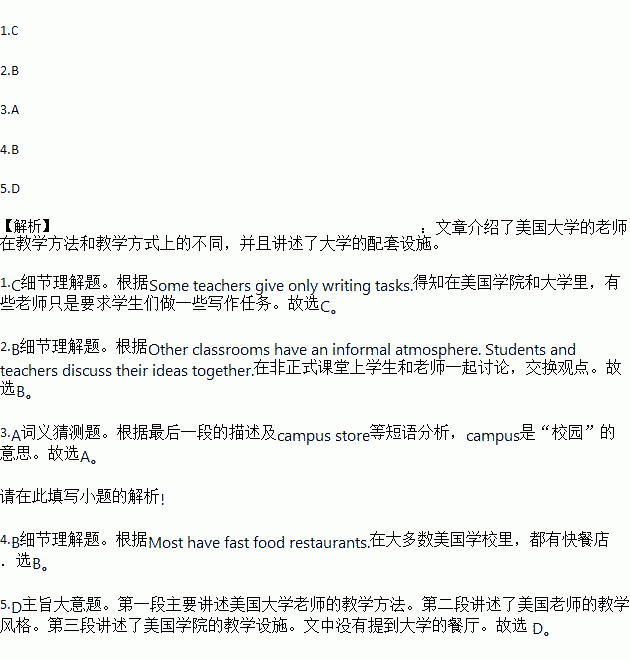题目内容
Teachers at American colleges and universities have many different teaching methods. Some teachers give homework and check homework every day, and students in their classes have to take many exams. Some teachers give only writing tasks. Some teachers always follow a course outline and usually use the textbook. Others send students to the library for tasks.
The atmosphere(气氛) in some classrooms is very formal. Students call their teachers Professor (教授) Smith, Mrs. Jones and so on. Some teachers wear business clothes and give talks. Other classrooms have an informal (非正式的) atmosphere. Students and teachers discuss their ideas. Teachers dress informally, and students call them by their first names. American teachers are different in their teaching styles.
At most American colleges and universities, libraries and learning centers can be used by students at any time. They can often use tape recorders, video machines and computers. They can buy books, notebooks and other things at campus stores. There are also services (服务) to students. They can get advice on their problems from their teachers. Colleges and universities usually offer facilities (设施) to students. Some schools have swimming pools and tennis courts. Most have fast food restaurants.
1.At American colleges and universities, some teachers _________.
A. never give their students any homework B. give classes in the library
C. give only writing tasks D. only give their students writing exams
2.In an informal class, _________.
A. students call their teachers Professor Smith, Mrs. Jones and so on
B. students discuss their ideas with their teachers
C. students have to take many exams
D. teachers dress formally
3.The underlined word "campus" means _________ in Chinese.
A. 校园 B. 工厂 C. 社区 D. 广场
4.According to the passage, most schools in America have _________.
A. swimming pools B. fast food restaurants C. tennis courts D. basketball courts
5.Which of the following is not mentioned in this passage?
A. Teaching methods. B. Teaching styles.
C. College facilities(设施). D. University dinning rooms.

